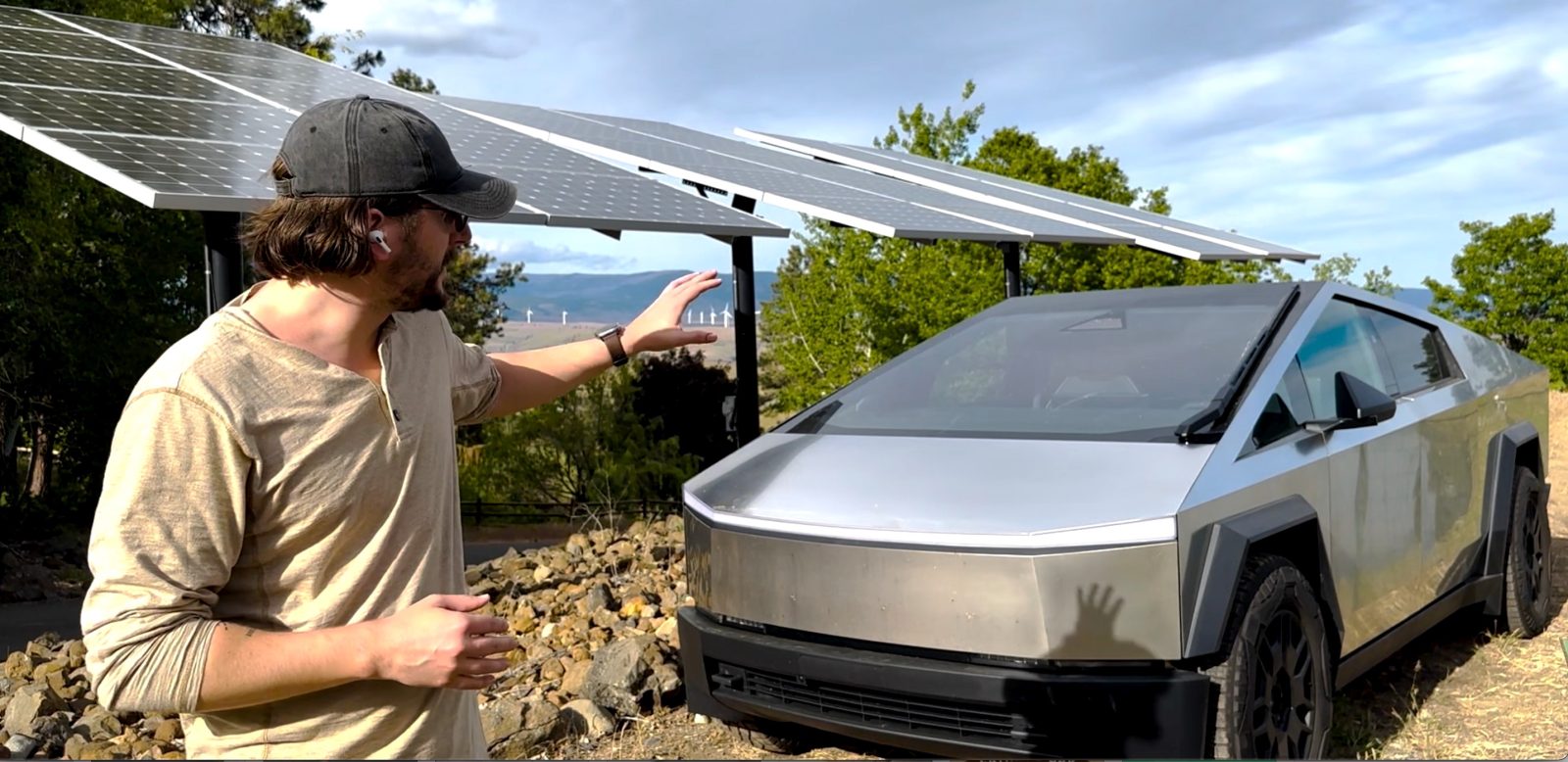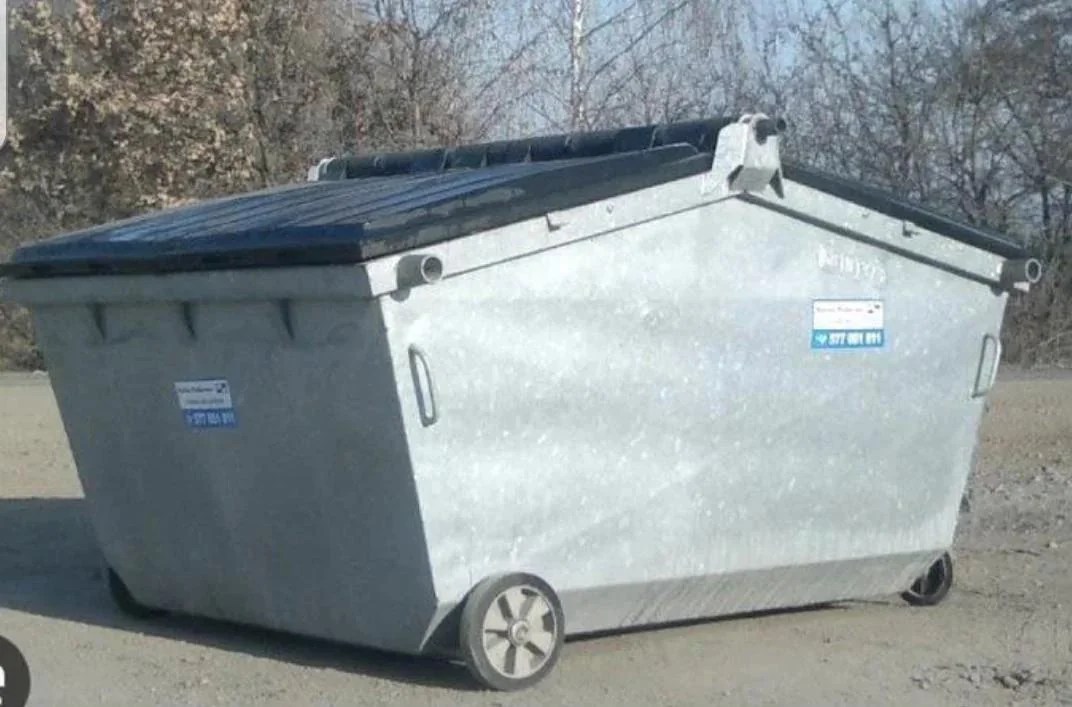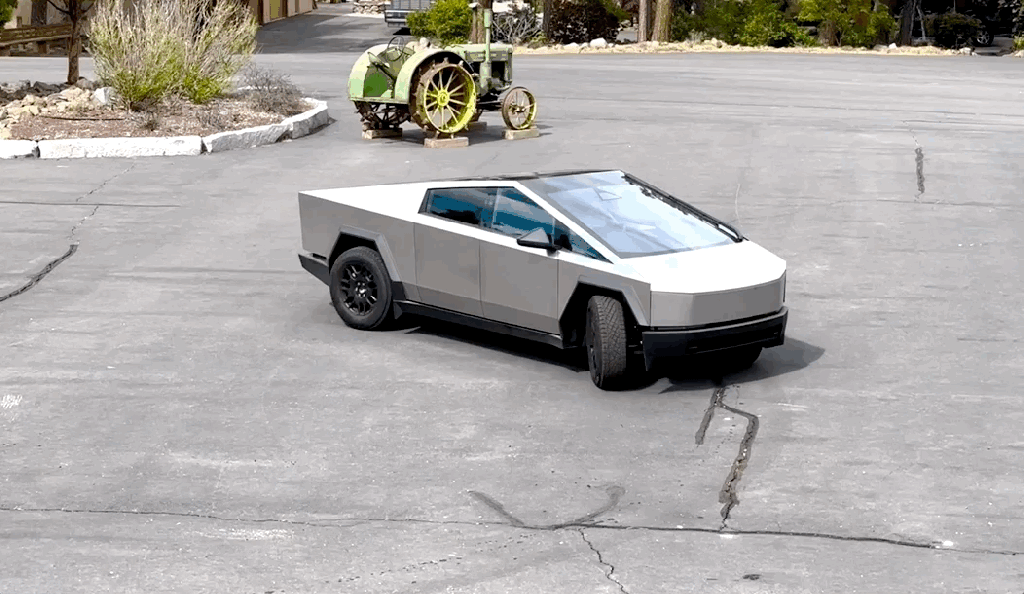
I got my hands on a Tesla Cybertruck for a week. Being from Canada, I haven’t had the opportunity to test the electric pickup truck until now.
So, for those who care, here’s my Tesla Cybertruck review:
I rented the Cybertruck on Turo and I had about a week to drive it around Washington for my review.
We put together a video review (if you enjoy it, I’d appreciate if you could subscribe, like, and share it):
My more detailed review is below, but here’s a quick TLDR:
I am particularly impressed by the technology inside the Cybertruck. It drives amazingly well. I was particularly impressed by the drive-by-wire system, which makes the truck drives like a video game. The rear-steering makes it turn on a dime. Also, Tesla should be commended for being the first to push to move to a 48-volt architecture.
However, there are some downsides. The novel design has forced Tesla to make some compromises, like the huge A-pillars resulting in a bling spot, the tonneau cover resulting in a useless rear-view mirror. Some of the downsides also seem to have to do with Tesla’s belief that self-driving is just around the corner – even though it doesn’t even have Autopilot right now. Finally, the charging capacity is subpar compared to Tesla’s other vehicles and competitors.
Attention Grabber
One of the first things you will notice when driving the Cybertruck is the attention you are getting. I’ve driven rare supercars that would get much less attention than this pickup truck.
Most of the time, it’s great. People come up to you and want to ask questions, which I am happy to answer unless I’m on a schedule. However, it can also be a pain. Plenty of people don’t ask before taking pictures and have no problem photographing you while you are inside the truck.
But more importantly, it can be dangerous. I had people drive erratically to try to catch up to me to take pictures of the vehicle while they were driving. Please don’t do that. It’s stupidly dangerous.
Either way, it likely not going to be a problem for long. It is a very novel vehicle right now, but Tesla is ramping up production and plans to make hundreds of thousands of Cybertrucks per year. Once that’s the case, I assume that the fascination and excitement will die down a bit and owners will be able to travel with less attention.
Things my girlfriend said about the Cybertruck
My girlfriend might be the Cybertruck’s biggest fan. Here are a few things I caught her casually saying during our week with the truck (yes, I actually kept a list cause I couldn’t believe how excited she was about it):
- All other cars can go home, this is the only vehicle that matters
- It’s the perfect car.
- Cars should have always look like that.
- If you don’t like this car, you don’t like the future.
- *sees people checking the truck from a distance* please make the truck fart.
- It is effing beautiful, I have nothing else to say.
For context and to be fair, she doesn’t drive, in fact, she has never driven a vehicle. She is a city girl without a driver’s license. She doesn’t know anything about cars. I’m not sure she could name you another car with a gun to her head, but she is a very artistic person who appreciates the “cinematographic look” of the Cybertruck’s design.
If anything, she is proof that some people do like the design.
Cybertruck’s Design
Personally, I’m still ambivalent on the design. I commend Tesla for departing from traditional vehicle and pickup designs and trying something novel.
Sometimes, I think it looks quite sharp, but I also can’t really argue with the people who say it looks like a dumpster.


Considering it is objective, I’ll focus instead on what Tesla’s novel design for the Cybertruck enables and what it forced Tesla to do.
In some ways, I feel like the Cybertruck is a great example of a product engineered from its design. I wouldn’t be surprised if the vehicle program were born from a Tesla designer going up to CEO Elon Musk with the Cybertruck’s design and Musk going: “I love it, let’s figure out how to build this.” Then Tesla’s engineers and designers had to make this thing a reality
There are quite a few characteristics in support of that. For example, Tesla first claimed that the Cybertruck would be built with an exosketlon and its website still mentions that today. However, teardowns and pictures of the truck’s body makes clear that you have to stretch the definition of “exoskeleton” to its very limit to still call it that. The Cybertruck’s built is much closer to a traditional unibody than anything else.
Tesla does have a point that the body panels add to the structural integrity of the vehicle, but they are certainly not the main structural part of the pickup. The panels are also thinner than originally planned.
Nonetheless, Tesla built the first stainless steel vehicle since the DeLorean and that’s cool by itself.

Many people like the idea of a rugged truck that doesn’t rust, doesn’t ding easy, and that’s it, but there are some downsides too.
It does get dirty with pollen and fingerprints quite easy. With the clean look with sharp lines, Tesla didn’t want any door handles. Instead of going with an embedded door handle that pops out, automatically like Model S, or manually like in Model 3/Y, Tesla instead went with a button that pops the door open and then you have to reach inside of it to pull it fully open – similar to the system in the Mustand Mach-E.

I feel like Tesla could have implemented that better. It could have had auto presenting door, it’s a $100,000 vehicle after all, but it could have also implemented simpler things to make the experience better.
Something like a rubber piece inside the door where you grab it would have been great to avoid touching a steel panel and could be use to swing the door close without having to touch the outside.
The ridiculously big windshield wiper in a vertical resting position is also something that was forced by the Cybertruck’s design.

If you want a straight line from the front end to the roof, you are going to lose the traditional indentation between the hood and windshield where you can hide the windshield wiper.
Personally, I don’t have much of problem with the wiper other than the fact that the auto mode works as bad as in other Tesla vehicles with vision-based automatic wipers.
The design also results in an extremely short overhang in the front, which means a relatively small front trunk or frunk. I was still able to fit two carry-on luggage after a few tries:
That’s certainly an area where the Cybertruck is lacking over the competition with Rivian R1 and the Ford Lightning both having much bigger frunks.
But the Cybertruck’s frunk is still useful and with the tonneau cover coming standard, the bed is still useful for everyday cargo that you want to keep clean.
Speaking of the bed, that’s probably where the Cybertruck’s design comes together the best.

The sides provide better aerodynamic performance, and you have the tonneau cover, which is super satisfying to use, as you can see in my video review, and also helps with aerodynamic performance.
At 6′ by 4′, the bed is useful, but the main downside is the shape of the sides, which means that some off-the-shelve pickup accessories won’t work and you will have to work with Tesla more to get some roof and bed accessories.
My favorite feature in the bed is the power outlets (two 120v and one 240v):

It is conveniently located on the left side of the bed near the tailgate.
Moving to the interior design, that’s where I think that Tesla had to compromise a lot to make the exterior shape of the Cybertruck work.
The first thing you notice is the dash, which looks as big as a twin bed. It looks odd, but it’s not really the problem. The problem is that it creates super long A pillars, which do create a blindspot on the driver’s side.

The small window in the middle does help a bit, but there were a few occasions at T intersections where I’d lose visibility on vehicles if there were a certain timing for them arriving at the intersection. Then, they would surprise me when turning.
The B pillars are also huge, but that’s not much of a problem, especially with the side cameras covering the blind spots.
For the rest of the interior, the design is solid. The all-glass roof looks awesome. The seats are comfortable. The UI is best-in-class, in my opinion – though I’m biased on that front since it’s similar to the one in my daily driver, my Model 3 Performance, which makes me quite used to it.
There’s a quick tour of the interior at 11:00 in my video review.
Cybertruck Driving Experience
That’s where the Cybertruck shines despite a few drawbacks. When I first sat in the truck, I couldn’t believe how small the steering wheel was. It didn’t even make sense in my head.

My feeling was that it had to do with the drive-by-wire with progressive steering.
Sure enough, it took some time to adapt, but once I’ve found good seat and steering wheel positions for me, I started to get it.
The steering is so responsive thanks to the progressive steering that the size of the wheel barely matters. In fact, the Cybertruck’s steering wheel could have been a joystick. Now that I think about it, it makes sense that many airplanes use a joystick, or a variation of it, to steer since they do use fly-by-wire.
You do certainly lose some road feel, but I think it’s worth it for just how responsive the steering is in the Cybertruck. I hope Tesla brings this to other vehicles.
The steering combined with the vehicle’s electric powertrain with instant torque makes this 6,000 lbs vehicle feels like a much lighter, smaller vehicle.
Then, you combine all that with the rear-wheel steering making the turning radius equivalent to a Model S.

On top of all of this, I found the Cybertruck’s cabin to be extremely quiet, which to me is one of the main things that makes a vehicle feel luxurious.
It’s not all great with the driving experience though.
Some of the previously mentioned design constraints do negatively affect the driving experience, but none more than the rear-view mirror situation.
When you have the tonneau cover on, which you want to for aerodynamic reasons, the rear view mirror is useless other than to keep an eye on your kids in the back if you have some.

Instead, Tesla uses its rear camera and feeds it to the center display. I don’t get why Tesla is not at least offering a rear-view mirror that doubles as a screen and send the feed there. It’s an exciting technology and this is a $100,000 vehicle.
It would be a much better experience than having to look at the screen and taking some screen real estate there.
But the biggest downside to driving the Cybertruck right now, at least on the highway, is the lack of Autopilot. Tesla has been delivering these trucks for 6 months now and while they are all sold with Autopilot and Full Self-Driving included, Tesla has yet to adapt its ADAS systems to the truck yet.
The automaker says that it is working on it, but it’s not a priority since improvements to the existing system for other vehicles that exist in higher volumes are more impactful. Not a bad point, but you can’t use that excuse for so long when you are selling the features on these new trucks.
Cybertruck Range and Charging
The vehicle was showing about 318 miles (511 km) of range when full and I felt like I would be able to get something close to that in my travel in fairly good conditions in Washington if I was optimizing for range, but I was having some fun with the truck.
That result in getting an average of 429 Wh per mile:

That results in closer to 286 miles (460 km) of range
Of course, you can expect that range to drop significantly if you use some of the truck’s 11,000 lbs towing capacity. We previously reported on Cybertruck towing range tests.
It is a bit disappointing that the Cybertruck’s range announced at the original unveiling is only achievable through an upcoming additional battery pack that will fit in the back of the bed, but at the same time, I think it’s an interesting solution and I’m curious to see how it will be implemented and used by customers.
The bigger bummer for me is the Cybertruck’s charging capacity.
It does have a peak charge rate of 250 kW like Tesla’s other vehicles, but that charge rate drops much faster than in Tesla’s other vehicles, resulting in fairly long “fast-charging” sessions.
In my own experience, you can get 130 miles in just about 10-15 minutes at a Supercharger if you are at a low (<20%) state of charge, but the top 50% charge can take up an hour at Supercharger.
Tesla says that it is working on improving that charge curve through a software update. The automaker is talking about as much as a 20% improvement, which is much needed.
Electrek’s Take
Overall, I have a positive view of the Cybertruck. I love that Tesla was bold enough to finally bring a 48-volt architecture and steer-by-wire to a high-volume vehicle program.
In the long term, I think it will prove impactful on the entire industry.
I just don’t understand the decision to package it in this way. Like I previously reported, it feels like the Cybertruck is more of a marketing tool than a standalone vehicle program. You could argue that it is better as a tech test bed and marketing tool than anything else.
Some people love it and I’m not there to be a party pooper. I’m not one of those who judge for loving the way the truck looks.
But I do wonder if Tesla would have had a bigger impact on its mission if it had packaged this technology in a different-looking truck. I’m not saying that it has to look just like all other pickup trucks on the market. It could have still had stainless steel, a rugged look, but in a less dramatic form factor.
With all its incredible tech inside and a form factor easier to adopt, Tesla could have more easily gone after the huge pickup truck market, which is badly in need of electrification. That’s its mission, after all.
Instead, I now feel like the market is mostly existing Tesla owners who don’t even really need a truck, but they are getting one because Tesla is making this. I am sure some of them do need one, but I feel like there’s a lot of that going on.
Either way, the thing I loved the most about the Cybertruck was the smiles. It’s a smile-making machine. I couldn’t tell you how many times I saw people walking in the street looking at their phones and looking up after catching a glint of the sun reflecting on the Cybertruck.
The reaction was always the same: a big smile.
Now, as I said in the “attention grabber” section, this will likely fade as Tesla delivers hundreds of thousands of Cybertrucks over the next few years. People will get used to seeing them, and the smiles will fade.
However, I think the Cybertruck drivers will be the ones who keep smiling because it is such a fun vehicle to drive.
